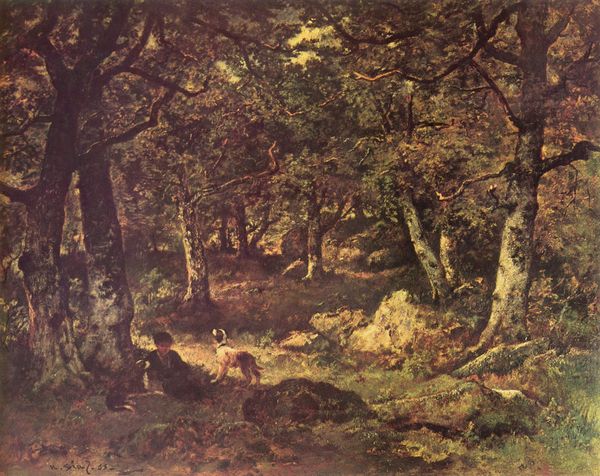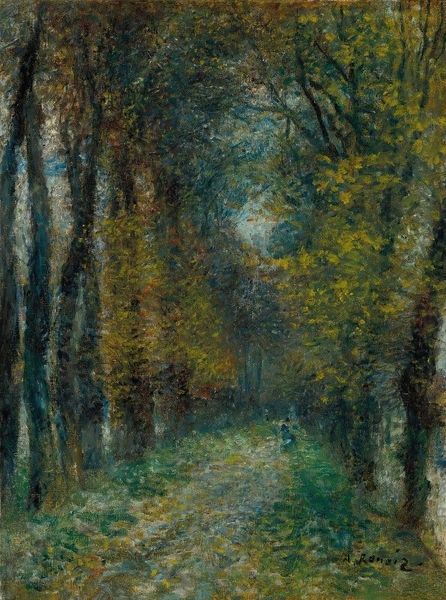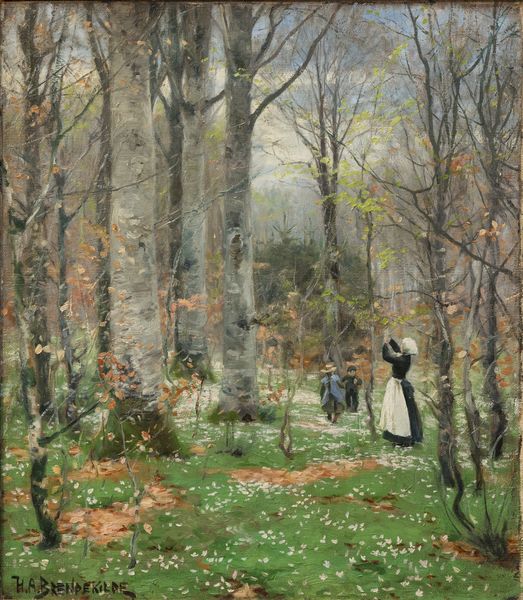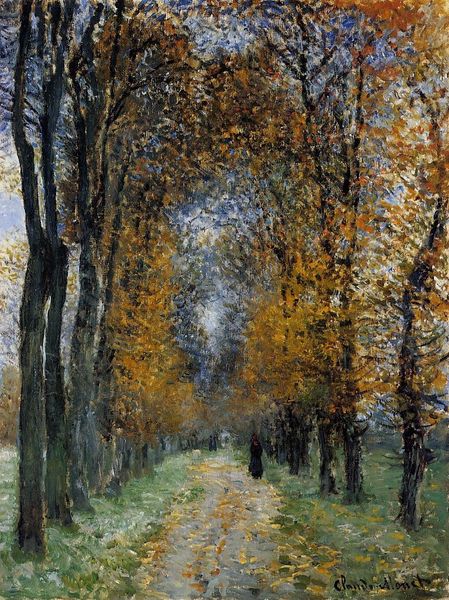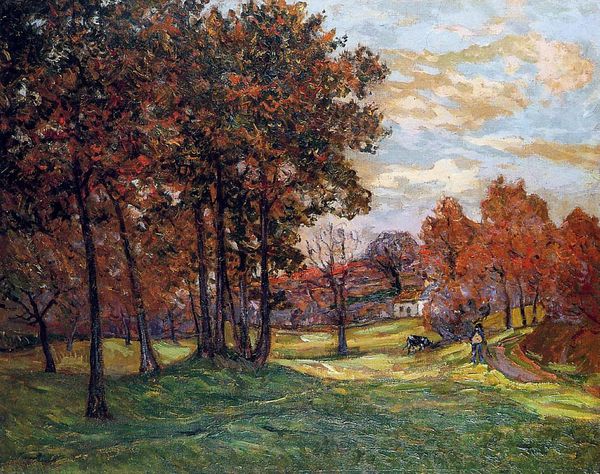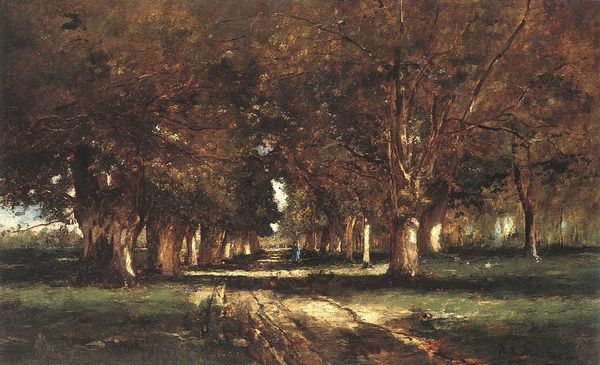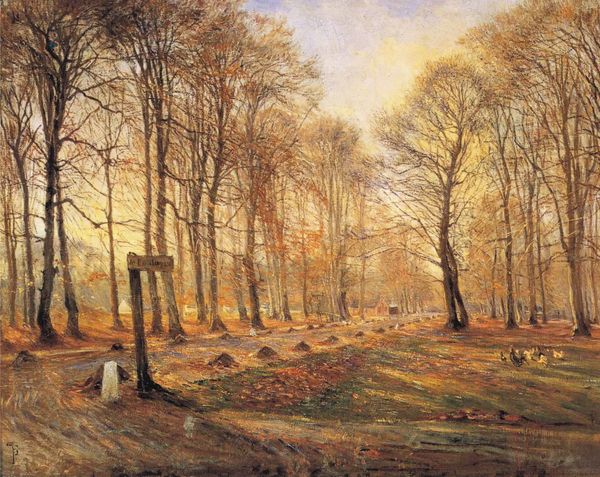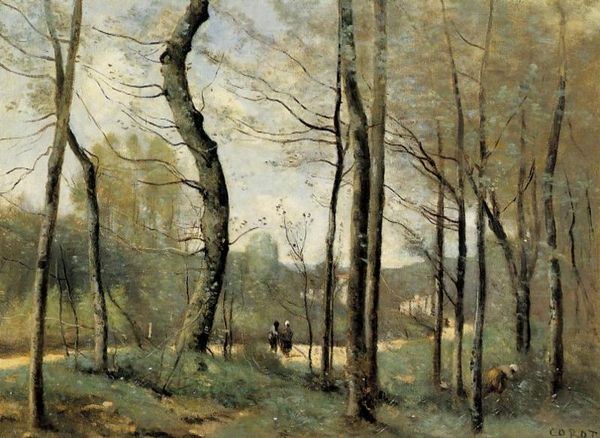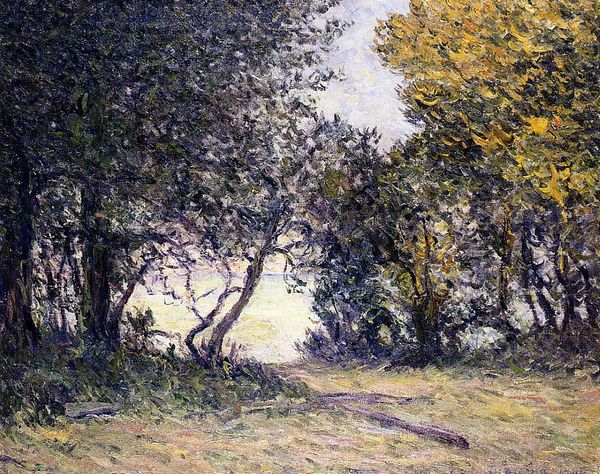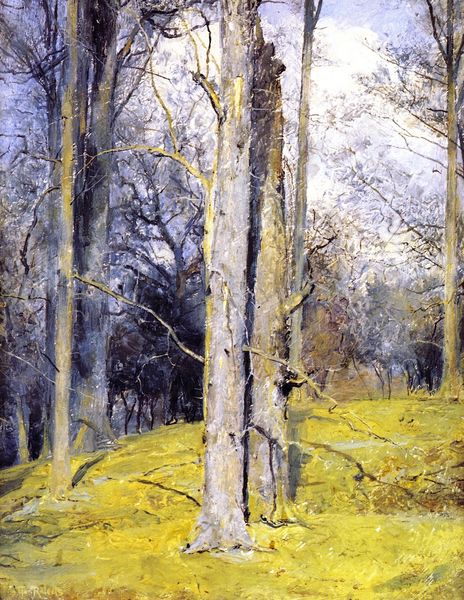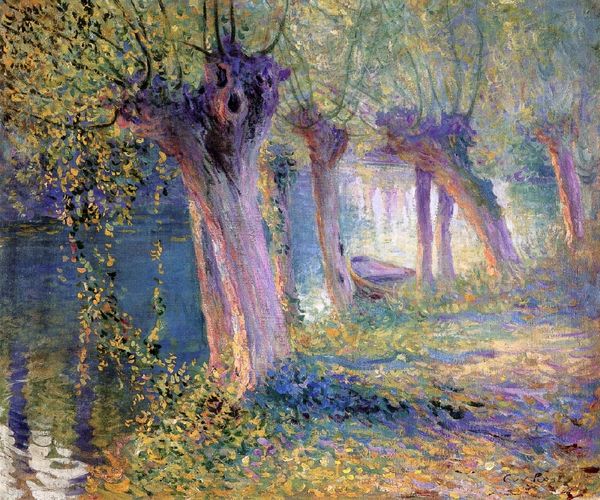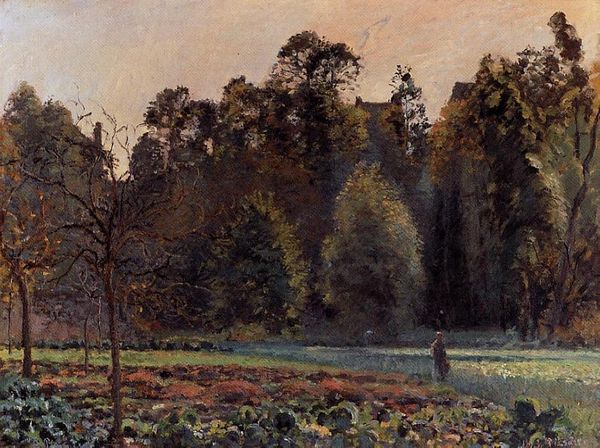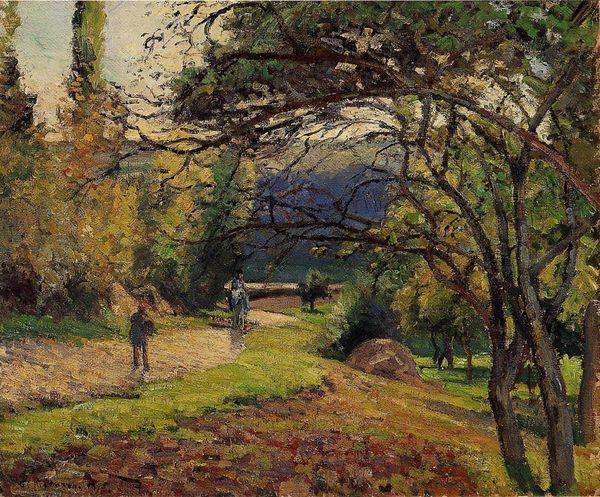
painting, plein-air, oil-paint
#
tree
#
painting
#
impressionism
#
plein-air
#
oil-paint
#
landscape
#
impressionist landscape
#
oil painting
#
genre-painting
#
realism
Dimensions: 65 x 92 cm
Copyright: Public domain
Curator: We’re looking at Camille Pissarro’s “Landscape with Rocks, Montfoucault,” painted in 1874. It resides in a private collection. Editor: Instantly, there's something familiar, like stepping into a childhood memory. The muted palette is calming, yet the composition has this delightful visual rhythm, like a half-remembered folk song. Curator: The composition utilizes a fairly structured arrangement; notice the repoussoir effect achieved through the large rocks in the foreground, drawing the eye into the middle ground where figures and livestock animate the scene. Observe how the verticality of the trees contrasts with the horizontal lines of the stone wall. Editor: True, there's definitely an underlying structure. But what captures me are the dappled sunlight filtering through the trees and the way the light interacts with the textured bark. It’s as if Pissarro wasn't just painting a landscape, but rather painting an atmosphere. I mean, it smells like damp earth and autumn leaves! Curator: His technique clearly serves that aim. Note how Pissarro employed the plein-air method, stepping away from idealized landscapes, engaging directly with the environment, documenting the conditions he observed—light, color, atmosphere—at a specific moment. Editor: Exactly! And that makes it more than just a pretty picture. The eye travels from the women—perhaps going about their daily chores—into a landscape with something elemental, something truly palpable about existence itself. It isn't grand or flashy, but deeply genuine. Curator: Indeed, Pissarro avoids both academic grandiosity and purely sentimental pastoralism. He represents the mundane, which has, in its own way, a quiet dignity. His paintings capture both reality and, crucially, a personal sensation. Editor: Ultimately, Pissarro reminds me that beauty isn't just about spectacle. It can be found in the quiet corners, the simple routines, in the places where earth meets sky and where everyday life unfolds. Curator: A fitting way to interpret a canvas that rewards close inspection and quiet contemplation.
Comments
No comments
Be the first to comment and join the conversation on the ultimate creative platform.
